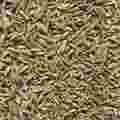Cumin is a most popular spice all over the world, especially in Latin America, North Africa and all over Asia, but least so in Europe, although it had been a common spice in the times of the Roman Empire (see silphion for more details on Roman cookery). Today, cumin usage in Europe is restricted to flavouring cheese in the Netherlands and in France; see also blue fenugreek about cheese and cheese spices.
Cumin is the second most popular spice in the world after black pepper. Cumin seeds are used as a spice for their distinctive aroma. Cumin can be used ground or as whole seeds. It helps to add an earthy and warming feeling to cooking, making it a staple in certain stews and soups, as well as curries and chilli.
The Specifications are as follows :
Purity: 99.50% , 99% & 98%
Flavour: Aromatic with Penetrating Flavour
Origin: India
Type: Machine Cleaned , Machine Cleaned sortexed
Cumin is one of the most typical spices for India, especially the Southern part. The fruits are used as a whole, and are fried (frequently together with onion) or dry-roasted before usage. Legumes, especially lentils, are normally flavoured by cumin fried in butter fat (see ajwain on perfumed butter tadka). Furthermore, the seeds form an important part of curry powder (see curry leaves) and of the Bengali spice mixture panch phoron (see nigella). Lastly, cumin is essential for the preparation of Northern Indian tandoori dishes (see mango). The fragrance of roasted cumin, typically in combination with coriander, is the most characteristic impression from South Indian or Sri Lankan cuisine!
Origin
Western Asia, where it is cultivated since Biblical times (see pomegranate). Main production countries today are India, Iran, Indonesia, China and the South Mediterranean.
Sensory quality
Strongly aromatic; the aroma is characteristic and is modified by frying or dry roasting

